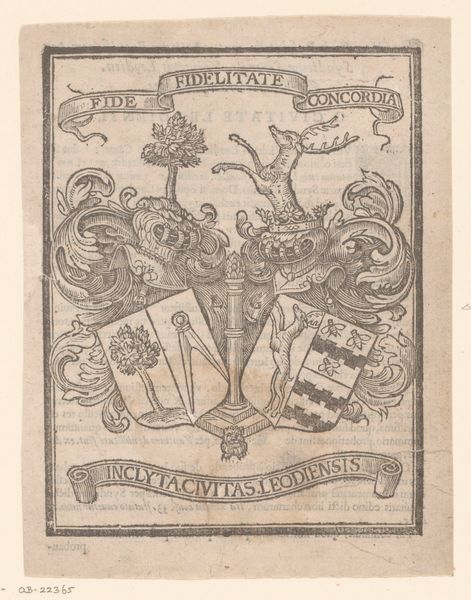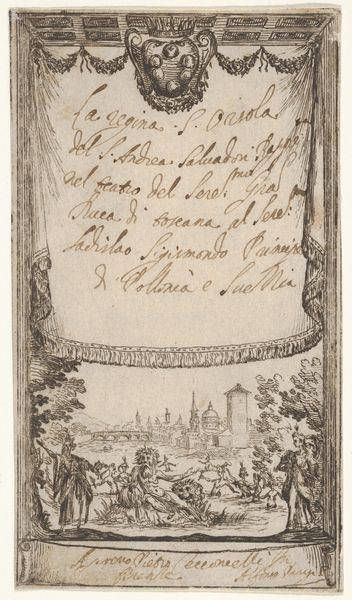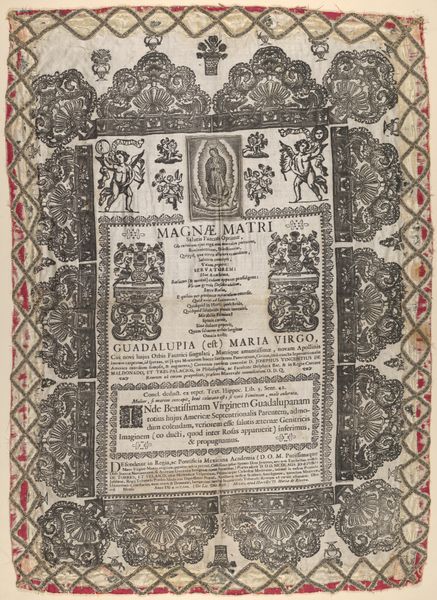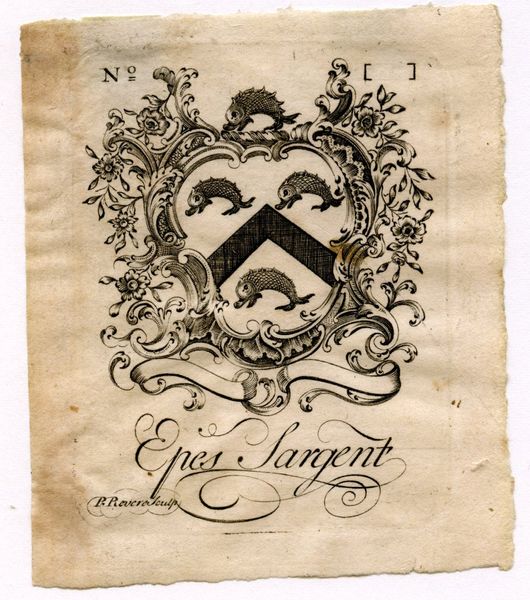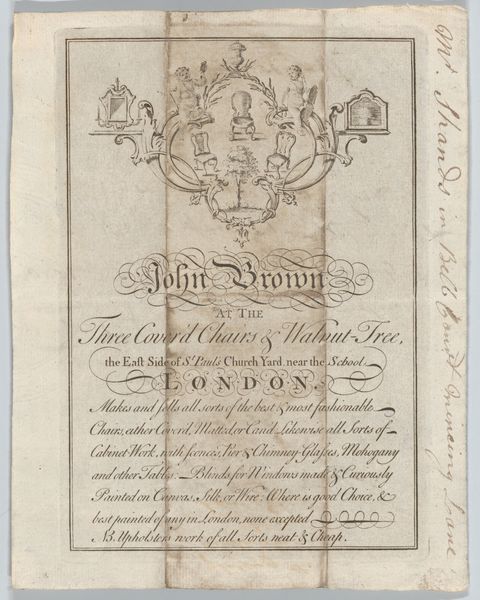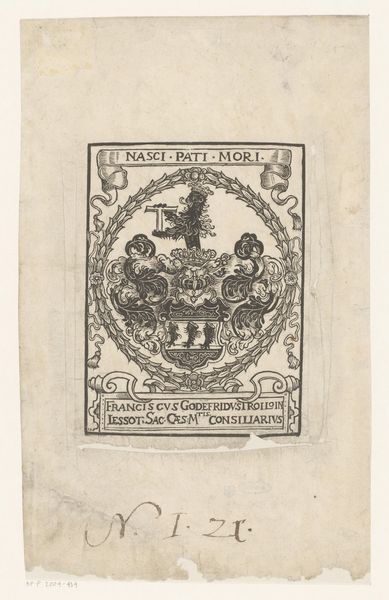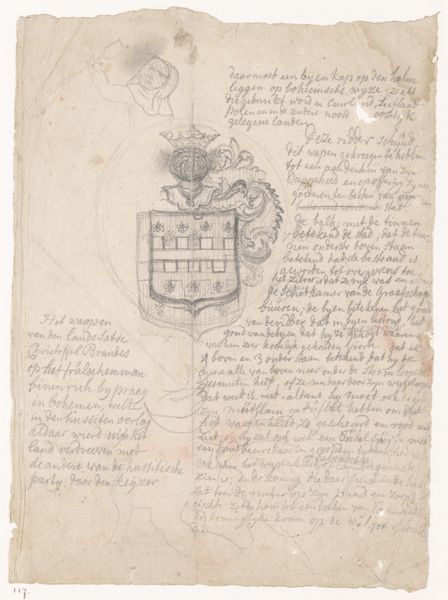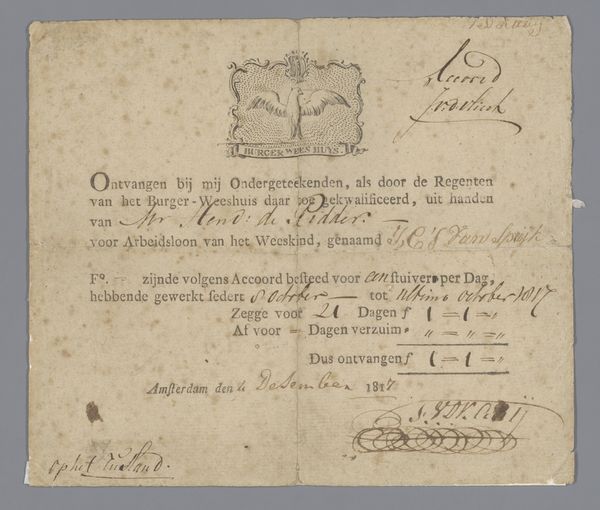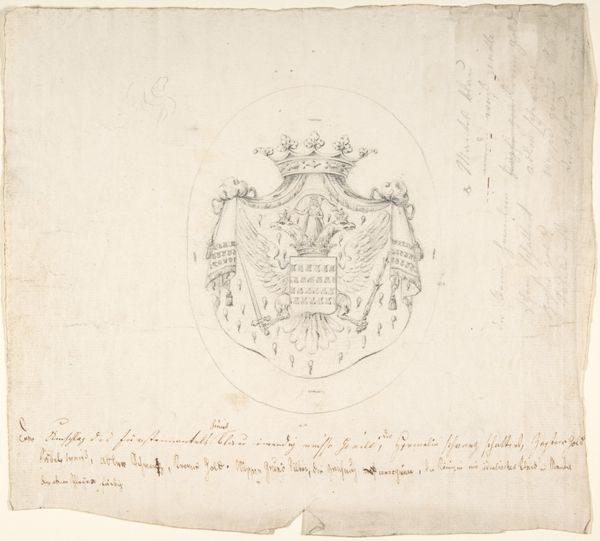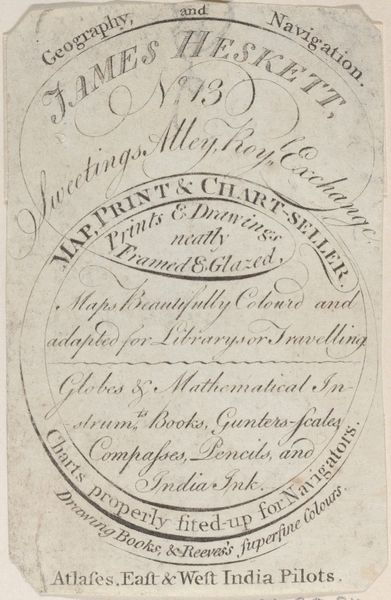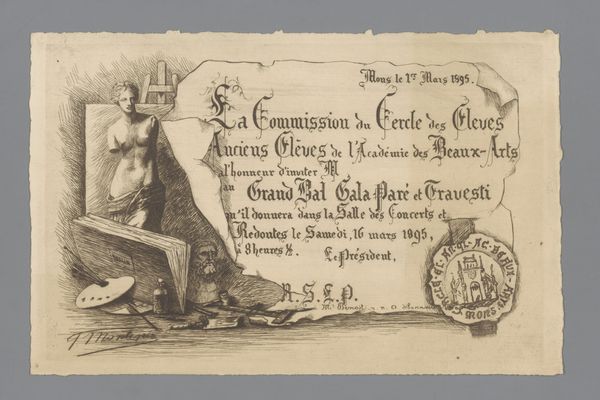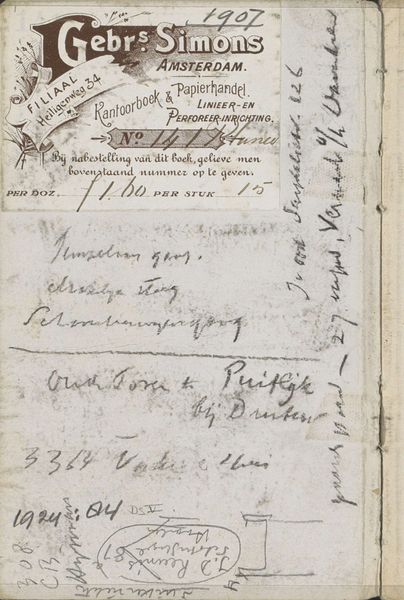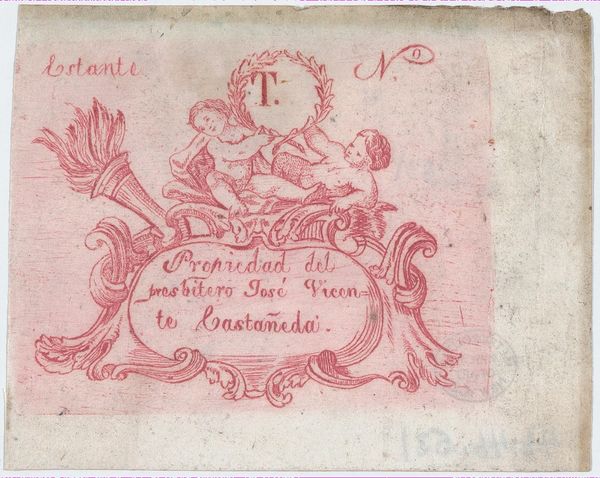
Wrapper: Burbank Paper Mill, Sutton, Massachusetts 1796 - 1806
0:00
0:00
drawing, print, paper, ink, pencil
#
drawing
# print
#
paper
#
ink
#
coloured pencil
#
pencil
Dimensions: sheet (edges folded under): 12 5/8 x 8 7/8 in. (32 x 22.5 cm)
Copyright: Public Domain
Curator: Let's examine this "Wrapper: Burbank Paper Mill, Sutton, Massachusetts" created between 1796 and 1806 by Caleb Burbank, primarily using ink and paper. Editor: It's interesting! The aged paper gives it a fragile feel. The details within the central figure contrast sharply with the haphazard notes and stamps around it, almost as if the package became a document. What can we learn from the process of creating such packaging? Curator: From a materialist viewpoint, this wrapper becomes more than just packaging. Think about the paper itself: its production, its very existence stemming from a mill owned by Burbank, indicates how integral craft and creation were to the function. We see not just art but a byproduct of industry, inherently bound to economics and the daily needs for material exchange. How does the inclusion of "C. Burbank—Sutton" factor into the wrappers social function? Editor: It connects it directly to the means of production! It serves as an advertisement or a stamp of approval for quality of product of said Burbank Paper Mill. Curator: Exactly. Moreover, consider the contrast of detailed drawings versus simple scribbles of names and notes that you pointed out. What assumptions about craft are challenged when something created to package the craft is so thoughtfully constructed? Editor: So the care put into designing the wrapper is equal to that of paper made? Curator: Precisely. It blurs those art distinctions because it's clear here labor and artistry intersect within a single, utilitarian object. It becomes this convergence point for economic reality, artistic expression, and labor value. Editor: I never thought about it like that, considering labor in assessing art! This perspective allows me to see deeper than its surface elements. Curator: And this helps us appreciate the inherent value in objects dismissed as functional instead of artistic. A perspective where craft meets commerce in surprising ways.
Comments
No comments
Be the first to comment and join the conversation on the ultimate creative platform.
